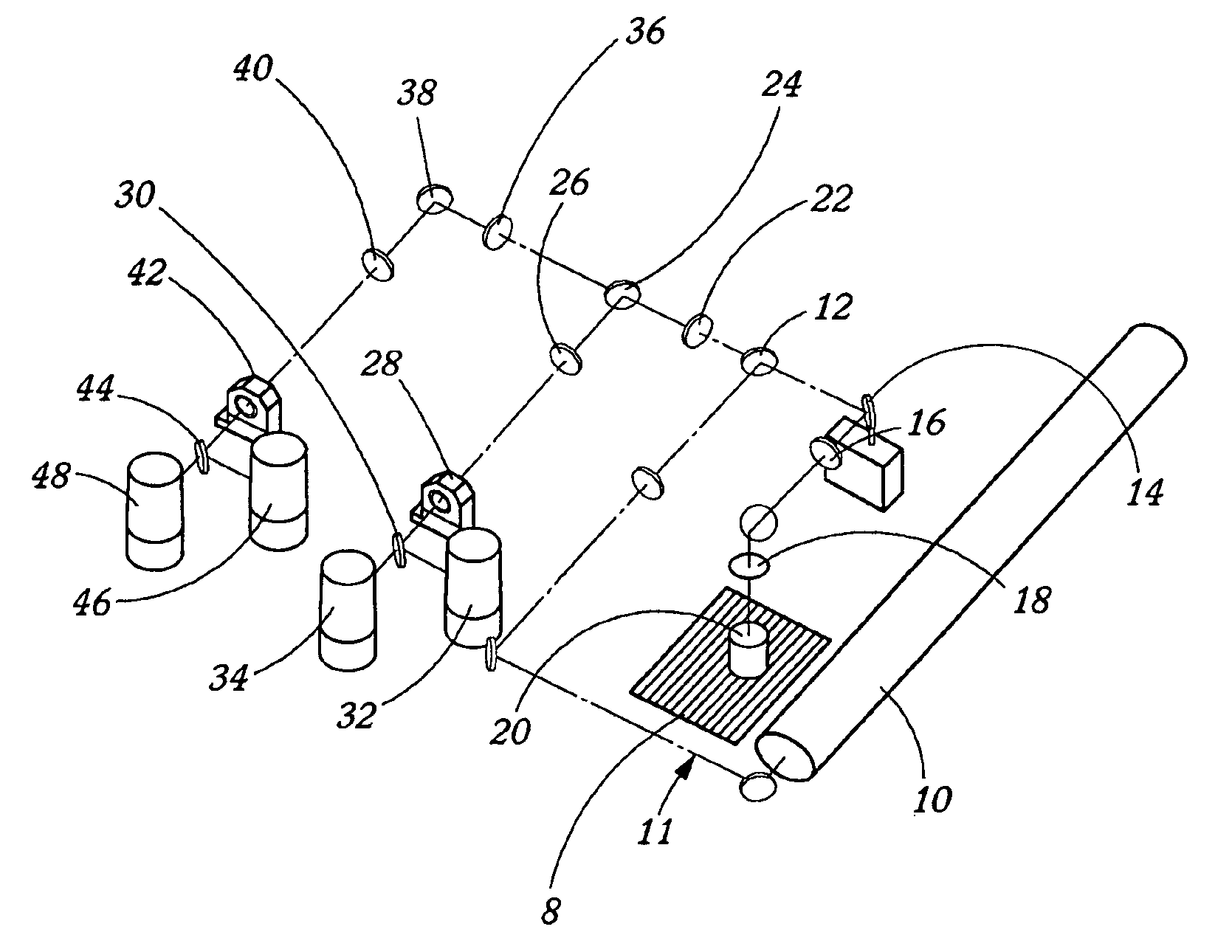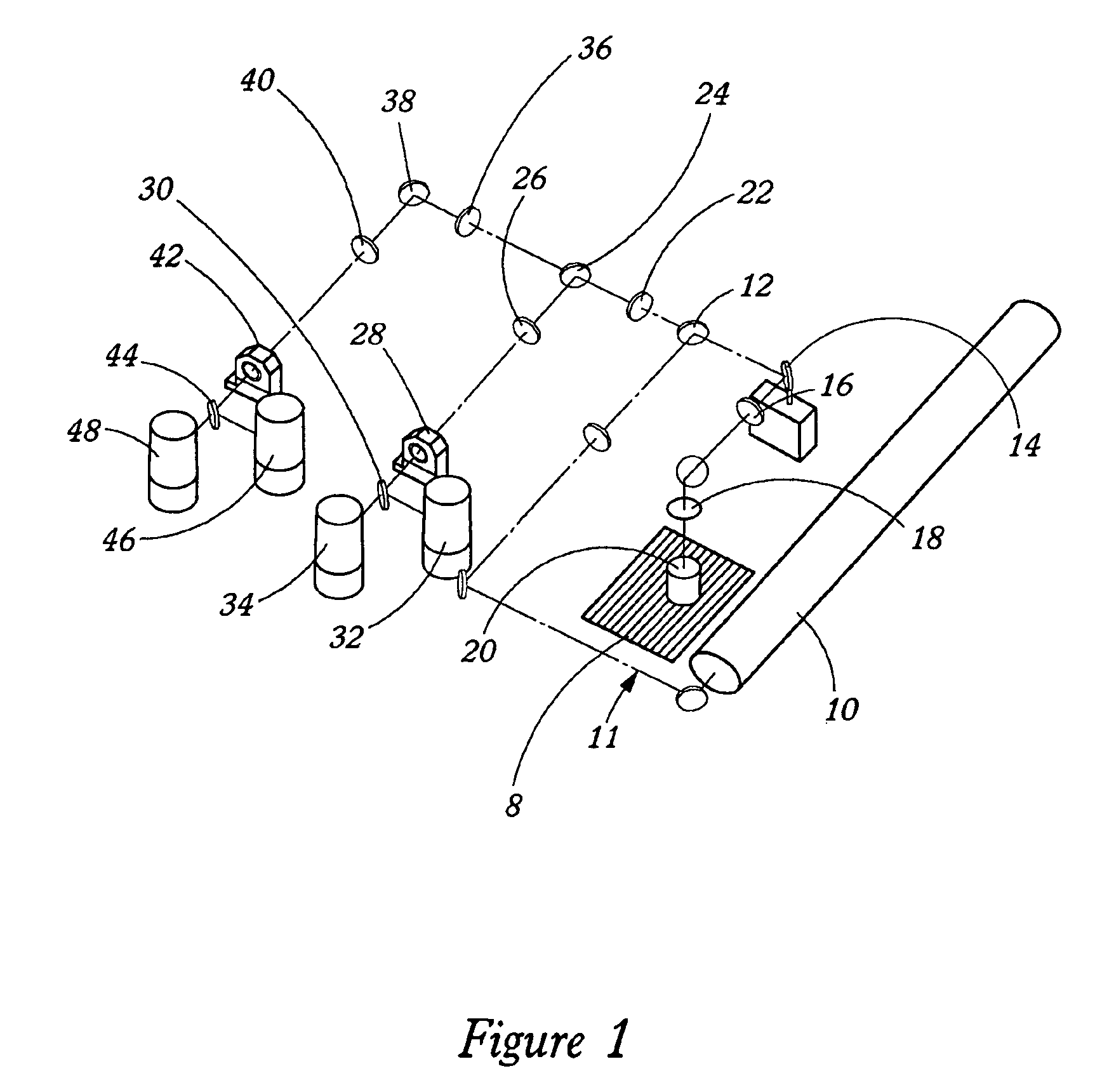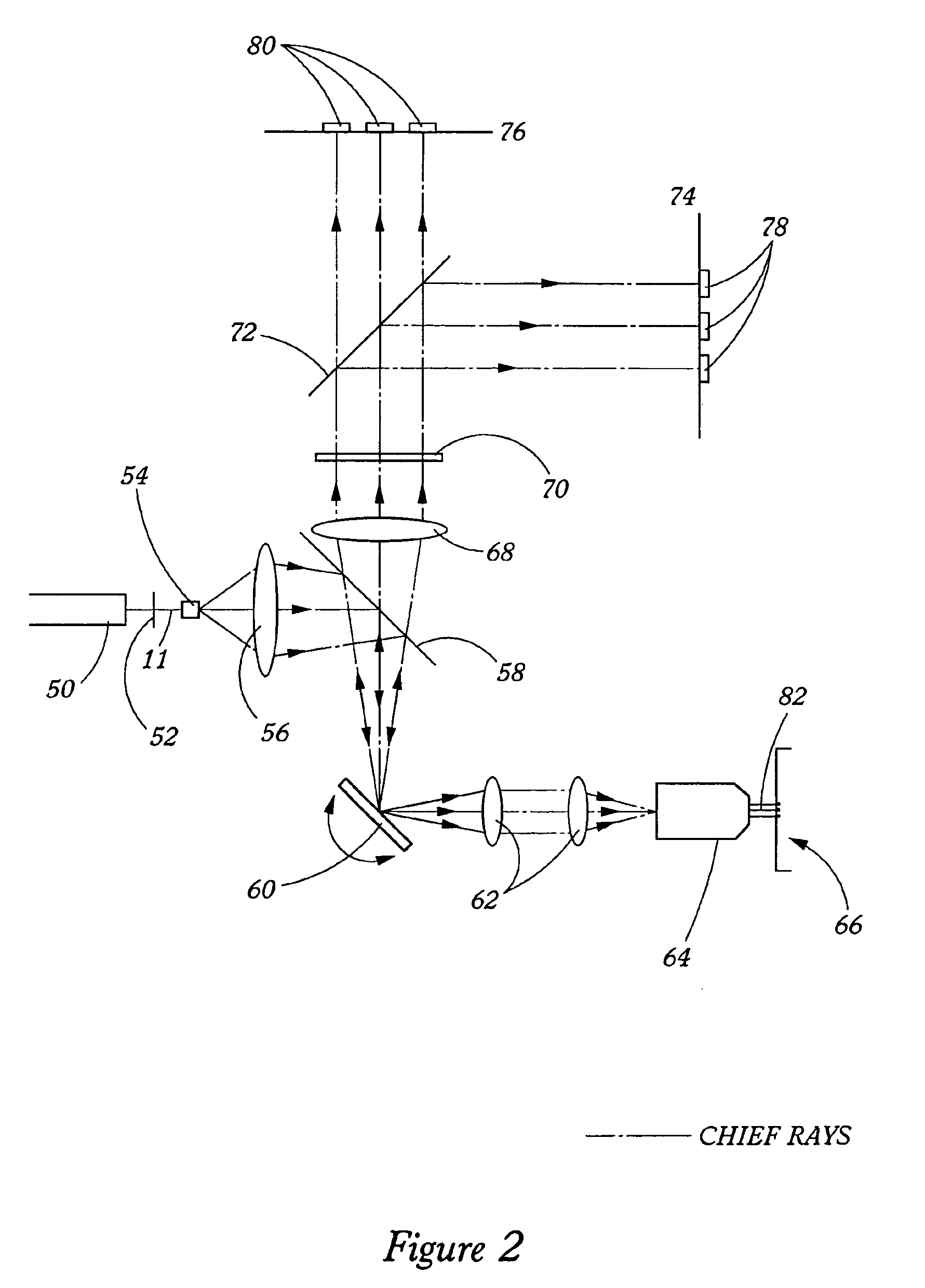Optical architectures for microvolume laser-scanning cytometers
a laser scanning cytometer and optical architecture technology, applied in the direction of optical radiation measurement, spectral modifiers, radiation measurement, etc., can solve the problems of limiting the speed and sensitivity performance of prior art systems, preventing further improvement in sensitivity and measurement speed, and commonly used pmt detectors with low quantum efficiency, etc., to reduce the power density in each spot, minimize sensitivity and laser power limitations, and high quantum efficiencies
- Summary
- Abstract
- Description
- Claims
- Application Information
AI Technical Summary
Benefits of technology
Problems solved by technology
Method used
Image
Examples
Embodiment Construction
[0025]The present invention provides spectroscopy methods and instrumentation with a number of novel optical configurations that allow multichannel images to be acquired quickly, and / or with time-resolution of the individual fluorophore emissions. In preferred embodiments, the invention uses CCDs as light detectors, wherein groups of pixels on the CCD form bins that are imaged onto the sample by the scanning optics. In preferred embodiments, each bin functions as a confocal aperture. The size of the bin determines the width of the cone of emitted light that is detected, and hence the greater the bin size, the greater the depth of field. Light that falls on the CCD outside of the bin is not detected. Hence, each bin functions in the same way as a mechanical confocal aperture. In preferred embodiments, the invention uses an array of laser spots to scan the sample simultaneously in multiple locations. Emitted light from each spot is imaged onto a separate confocal CCD bin, and the imag...
PUM
| Property | Measurement | Unit |
|---|---|---|
| angles | aaaaa | aaaaa |
| scan width | aaaaa | aaaaa |
| quantum efficiencies | aaaaa | aaaaa |
Abstract
Description
Claims
Application Information
 Login to View More
Login to View More - R&D
- Intellectual Property
- Life Sciences
- Materials
- Tech Scout
- Unparalleled Data Quality
- Higher Quality Content
- 60% Fewer Hallucinations
Browse by: Latest US Patents, China's latest patents, Technical Efficacy Thesaurus, Application Domain, Technology Topic, Popular Technical Reports.
© 2025 PatSnap. All rights reserved.Legal|Privacy policy|Modern Slavery Act Transparency Statement|Sitemap|About US| Contact US: help@patsnap.com



